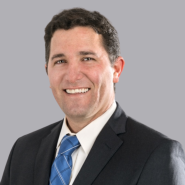Markush Language Distinguishes over Multi-Component Solvent
- January 31, 2022
- Article
Associated People
Associated Technologies
The Patent Trial and Appeal Board (PTAB) overturned the examiner’s obviousness finding in Ex parte PETER KAPITAN and ALEXANDER SAJTOS (Appeal 2021-001272; USSN 14/409,522) substantially on the basis of a recitation of “… the solvent … is an alkane selected from a group consisting of pentane and hexane” distinguishing over the prior art description of the optional use of petroleum ether, with evidence that petroleum ether is not simply pentane or hexane.
The appealed claim in Ex parte Kapitan recited:
[a] process for the manufacture of a methylfluoroacrylate, comprising the following steps:
A. a methylfluoroacetate with an ester of oxalic acid is reacted in the presence of a base and a suitable solvent in a crossed Claisen condensation reaction resulting in a Claisen salt;
B. the Claisen salt obtained in step A is optionally filtered off and washed with a suitable solvent;
C. the Claisen salt obtained in step A or B is reacted with paraformaldehyde in a suitable solvent;
D. the methylfluoroacrylate obtained in step C is isolated using a suitable solvent,
wherein the methylfluoroacrylate isolated after distillation has a purity of at least 99.5 wt%, contains below 0.5 wt% methylfluoroacetate and below 2.0 wt% dimethyl carbonate;
wherein the solvent in at least steps C and D and optionally in one of steps A or B is an alkane selected from a group consisting of pentane and hexane.
The appellant made several arguments in appeal as to the propriety of the finding of inherency for pentane/hexane in petroleum ether, the lack of a reasonable expectation of reaching the yield and purity claimed, and the lack of a particular motivation to select the pentane or hexane.
As noted in the PTAB decision, the application in question described in its background section that the particular reaction claimed was first reported in the mid-1960s by in patents US 3,262,967 and US 3,262,968, over which the application in question was rejected with two further references. The application in question acknowledged that the 1960s patents described using “solvents such as tetrahydrofuran (THF), diethyl ether (Et2O), methyl-tert-butyl ether (MTBE), dimethylsulfoxide (DMSO) or toluene.” In fact, the 1960s patents further disclosed petroleum ether as an option for use as a solvent. The application in question noted, however, that a problem of the known syntheses was the generation of certain undesirable side-products in no less than 0.5 wt.% and 2.0 wt.%.
The examiner rejected the original claims over the 1960s patents in combination with US 6,509,134 (Ito, 2003) and CN 102211998 (Zhenjiang, 2011). The rejections relied upon the examiner’s assertion that “petroleum ether consists of pentane and hexane hydrocarbons.” This assertion may have more accurately intended to state “C5 and C6 hydrocarbons.” The applicant provided evidence that there are a broad variety of petroleum ethers, and petroleum ether is not a single composition, but in fact, a mixture of aliphatic hydrocarbons, including C5 to C13 paraffins and optionally trace small aromatics. The applicant acknowledged that some petroleum ethers, particularly those used as rubber solvents, may contain n-hexane.
The examiner further asserted that some overlap in solvent lists described in Zhenjiang’s reaction (analogized to step C, though describing an enolate rather than a fluoroacetate ester), namely diethyl ether, methyl tert-butyl ether, diphenyl ether, ethylene glycol dimethyl ether, and tetrahydrofuran, were grounds to extrapolate the entire solvent list in the 1960s patents to the reaction, and that Ito’s description would lead to the claimed purities.
The phrasing of the solvent recitation was amended in prosecution to recite “wherein the solvent in at least steps C and D and optionally in one of steps A or B comprises is an alkane which is selected from a group consisting of pentane or and hexane,” i.e., a more formal Markush expression. Further, the feature that “the methylfluoroacrylate isolated after distillation has a purity of at least 99.5 wt%, contains below 0.5 wt% methylfluoroacetate and below 2.0 wt% dimethyl carbonate,” was introduced in the penultimate response before appeal.
The PTAB noted that that the 1960s patents taught using “petroleum ether” as an inert solvent, but did not indicate using pentane or hexane alone as a suitable inert solvent. Further, the PTAB found that the solvent use described in the 1960s patents was for extraction (step D), rather than the reaction (step C). The PTAB also disputed that “ some overlap between the list of inert solvents” in Zhenjiang’s reaction and those in the 1960s patents, would establish functional equivalence of the use of pentane and hexane. The PTAB further noted that Zhenjiang’s reaction differed from step C in describing an enolate rather than a fluoroacetate ester, which could have affected the predictability of the solvent modification. The PTAB ultimately found that the examiner had “not established from the prior art cited that pentane or hexane would have been obvious to select as equivalent alternatives of the inert solvents identified in Zhenjiang.”
This appeal, Ex parte Kapitan, illustrates that the use of Markush language can distinguish over mixtures including components individually recited in the Markush group. This effect, however, should precaution applicants to wisely employ Markush language, and not simply apply Markush form to groups of components the applicant does not wish to be exclusive. Beyond this, Ex parte Kapitan shows that not all extrapolations commonly made by post-KSR USPTO examiners are actually obvious, particularly when the results are recited in the claims, as here, due to the failure to establish a reasonable expectation of success in the modification of the prior art.
Recent Publications
5 IP Rules to Know to Protect Your Business in the United States (article in French)
Coaching INPI Newsletter










 Counseling & Strategic Advice
Counseling & Strategic Advice IP Transactions
IP Transactions Litigation
Litigation PTAB Proceedings
PTAB Proceedings Start-Up
Start-Up Technology Transfer
Technology Transfer Trademark & Designs
Trademark & Designs U.S. Patent Procurement (Application Drafting & Prosecution)
U.S. Patent Procurement (Application Drafting & Prosecution)








